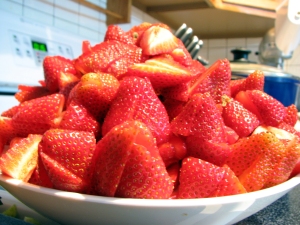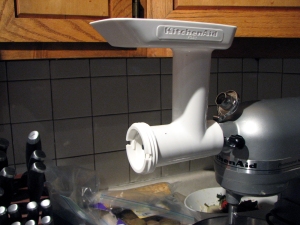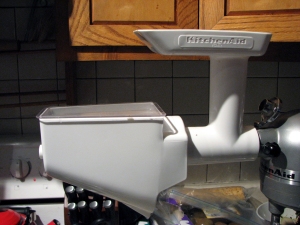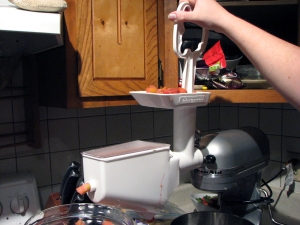Peachy Keen
August 7, 2012
Peaches are WAY up there on the list of awesomest fruit. But I constantly struggle with feeling like they are only “in season” at the grocery store for about 45 minutes, and that by the time I am done unpacking the groceries to put everything away, they’re wrinkly-mush-balls.
Still, we’re making an effort, and at least 15% of our peaches are ripe when we process them. Most of the peaches we’ve handled so far we have sliced up, placed in a simple syrup and a chunk of vanilla bean, and canned (probably another post coming to a blog near you). We had a few chunks left over so we tossed them in the dehydrator because why not, and they are EFFING FANTASTIC. They hold their flavor so well they are just absolutely yummy.
So we dehydrated a bunch of peaches just for funsies because I definitely want more of those around.
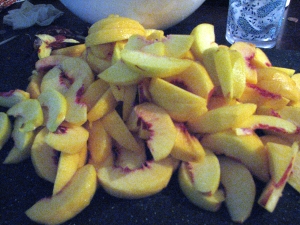 We went with fairly thin slices (.25 inch) for the dried peaches, and slightly larger (.5 inch) for the canned peaches. Also, if you are doing both at the same time, I’d can the peaches that are the least ripe. They will be flavored some by the syrup as well as the other peaches, and the sugar will help pull juice and flavor out. For drying, what you put in is what you get out, so the ripest ones are the best.
We went with fairly thin slices (.25 inch) for the dried peaches, and slightly larger (.5 inch) for the canned peaches. Also, if you are doing both at the same time, I’d can the peaches that are the least ripe. They will be flavored some by the syrup as well as the other peaches, and the sugar will help pull juice and flavor out. For drying, what you put in is what you get out, so the ripest ones are the best.
Chopping up peaches…it’s the pits! (ha ha…oh fine. It wasn’t funny).
I will say that even slices will help you maximize your dehydrator space. The very even rows *really* appeal to my neurotic side.
Next to come will likely be the saga about all the insane amounts of canning and drying we are doing. It might even include a sneak peak of our upcoming adventure that will put our skills to the test. Stay tuned!
Fruit of Our Labor
March 27, 2012
To continue with our theme of making our own food, Katie and I decided to tackle something I adore – fruit rollups. It never occurred to me how they were made, but it turns out they are surprisingly simple. We have made apple fruit rolls as well as today’s recipe – pear strawberry rolls.
You start with fruit. A lot of fruit. Like, eight pounds of fruit. We divided this amount between pears and strawberries. Start by chunking everything up in to smaller pieces so that you can cook it down somewhat.
We cooked these down in a large pot, along with a half a cup of pineapple juice and a bit of honey. We tossed the pears in first because they took longer to cook, then added the strawberries. We let it all boil until the pears began to soften – maybe a half hour or so.
While the fruit is cooking down, we set up our food mill. In this case, we have an attachment for our Kitchen-aid.
The main attachment sets in to the front of the kitchen-aid. This is where the food will be pushed in to the mill.
The corkscrew is placed in to the center, and when on, will turn and move the food down the chamber and through the screen.
The screen is the strainer that is placed over the screw. The screw will push food down to the end, and push food out through the strainer.
Finally there is a basket placed around the entire strainer. This allows the strained food to be pushed out and fall to the right, while the solids (fruit skin, stems, etc) are pushed out the front. Make sure you have a container to catch both!
As you can see, the fruit was placed in to the top of the miller. We have a tool to push down the fruit to make sure it makes it gets all the way to the screw.
As you can see, the fruit that is strained is falling down the chamber to the right, in to the white bowl. The glass bowl is catching the fruit skin and solids that we don’t want in our strained fruit.
Once you have your strained mixture, spread it out in layers. We used a dehydrator and it made about four trays worth of puree. We set it up to go overnight, and about nine hours later we had fruit leather. You can also do this in the oven on parchment, baked on a lower temperature until dry. You want the fruit to maintain a little springiness, but not be sticky or wet feeling. Once you have your fruit rolls dried, you can tear them up in to pieces and enjoy!



